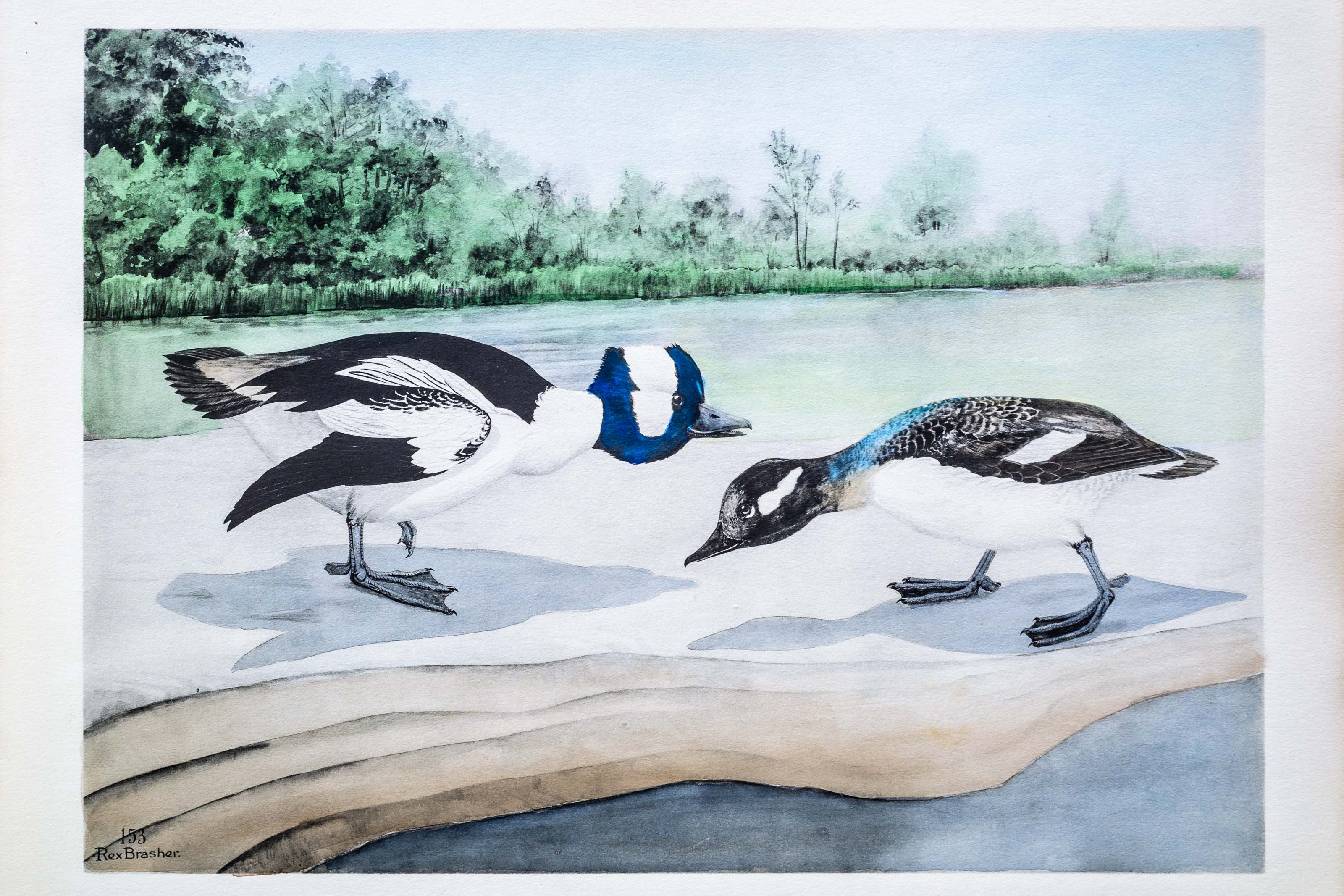
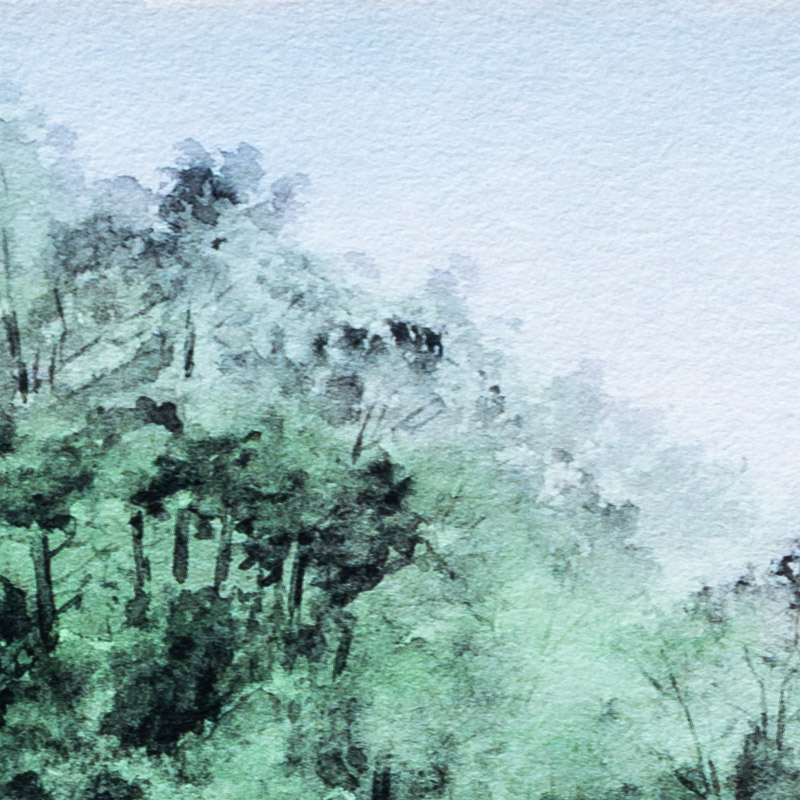
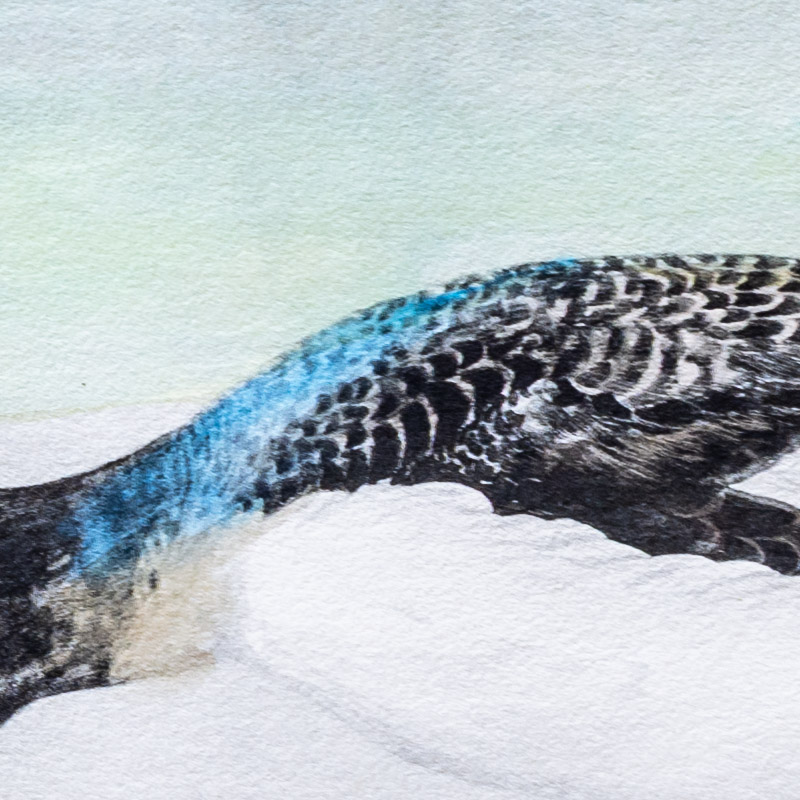

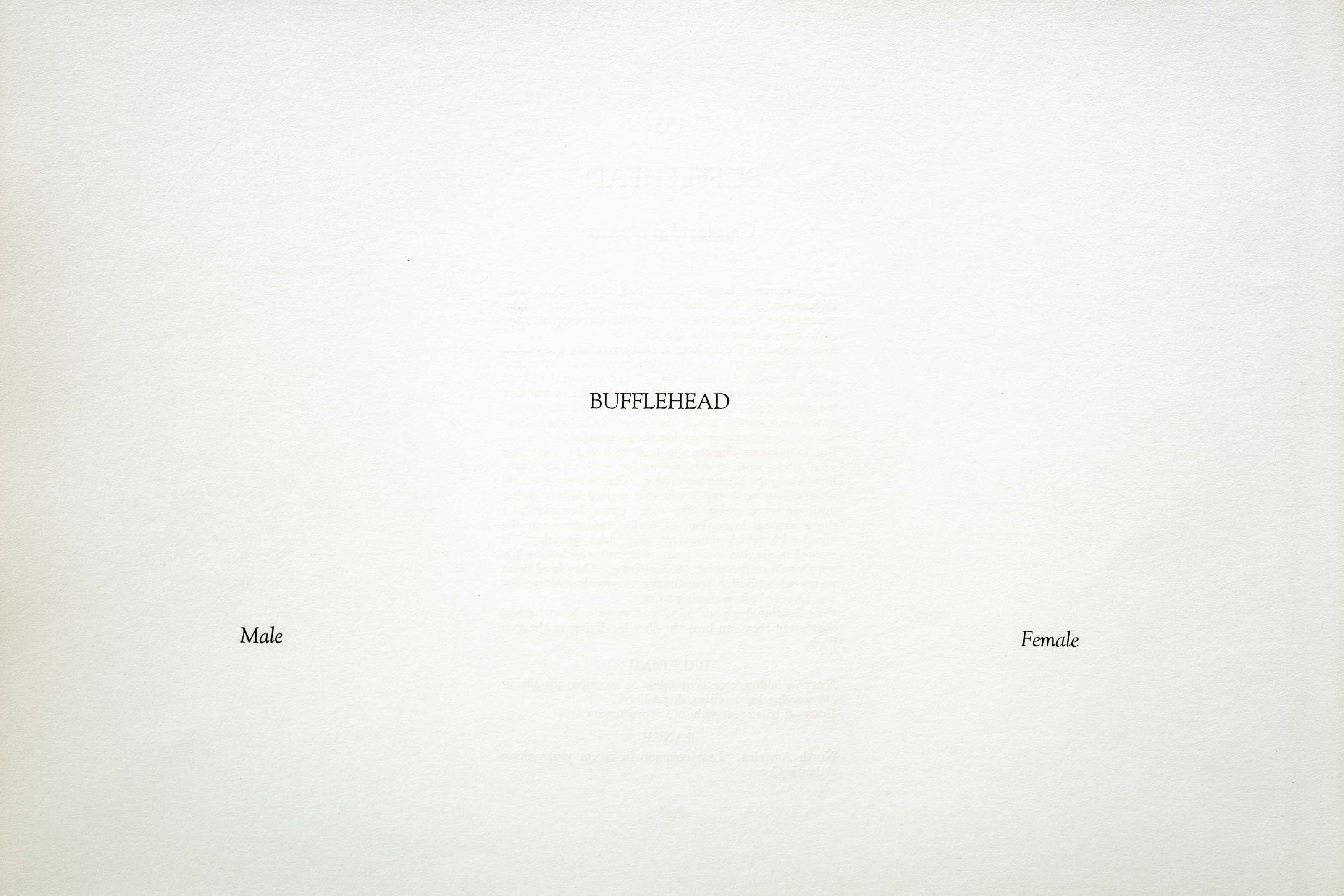
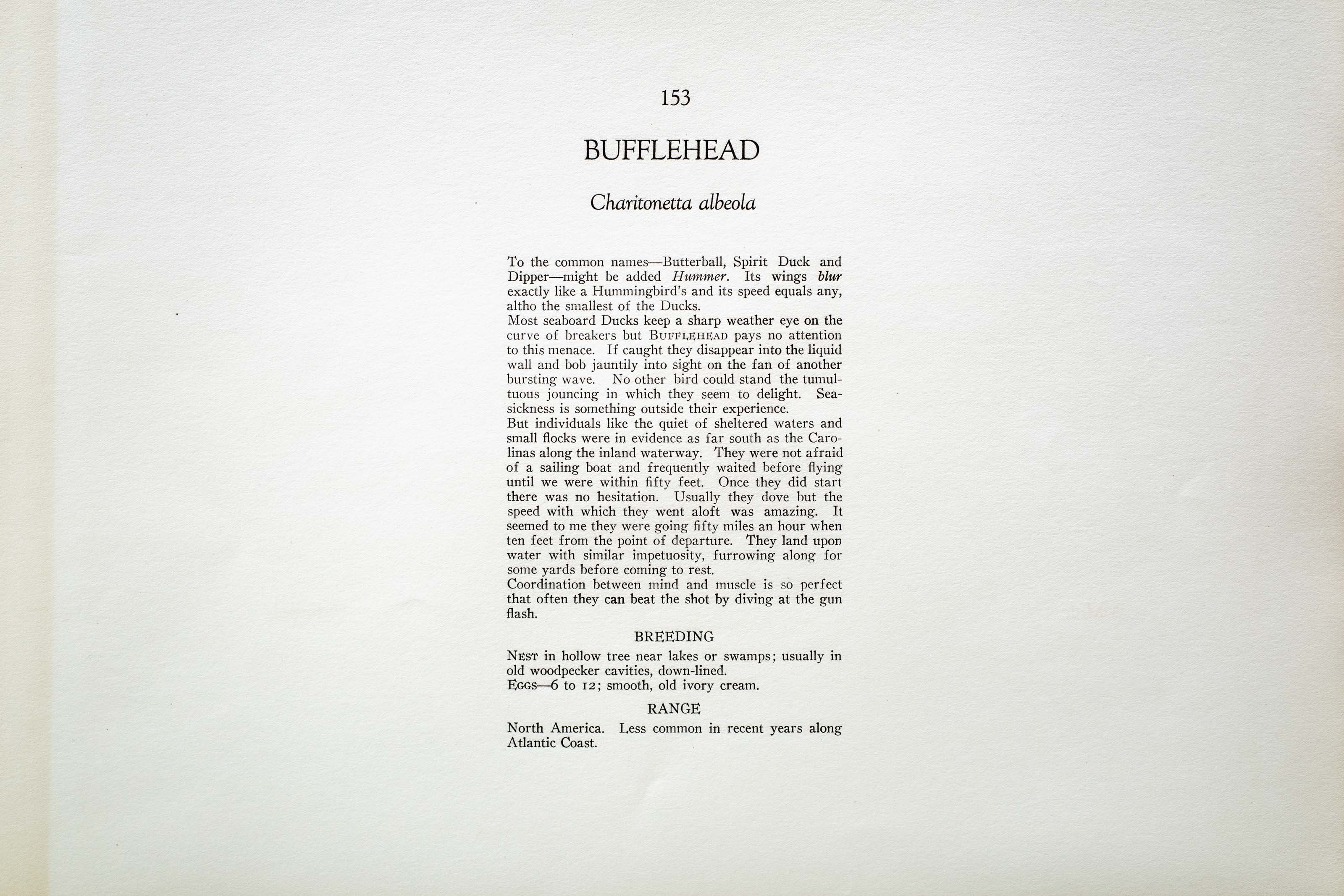

Unknown
1930
3
153
A team of dedicated board members, volunteers, and student interns has published every page in Volume 9. This volume includes 360 images of paintings and lyrical descriptions of birds, now available online for everyone to enjoy anywhere in the world. This is a monumental task. Each volume requires approximately 400 hours to photograph, edit, transcribe, catalog, and publish online. We need your support to complete this work.
If you're tech-savvy, have a good eye, are meticulous with details, and love structured data, please consider volunteering by emailing us at hello@rexbrasher.org.
We encourage all bird lovers and supporters to consider a monetary donation to support our mission to make Rex's work available for everyone. You can provide a one-time or recurring donation online.
To the common names — Butterball, Spirit Duck and Dipper — might be added Hummer. Its wings blur exactly like a Hummingbird's and its speed equals any, altho the smallest of the Ducks.
Most seaboard Ducks keep a sharp weather eye on the curve of breakers but BUFFLEHEAD pays no attention to this menace. If caught they disappear into the liquid wall and bob jauntily into sight on the fan of another bursting wave. No other bird could stand the tumultuous jouncing in which they seem to delight. Seasickness is something outside their experience.
But individuals like the quiet of sheltered waters and small flocks were in evidence as far south as the Carolinas along the inland waterway. They were not afraid of a sailing boat and frequently waited before flying until we were within fifty feet. Once they did start there was no hesitation. Usually they dove but the speed with which they went aloft was amazing. It seemed to me they were going fifty miles an hour when ten feet from the point of departure. They land upon water with similar impetuosity, furrowing along for some yards before coming to rest.
Coordination between mind and muscle is so perfect that often they can beat the shot by diving at the gun flash.
NEST: in hollow tree near lakes or swamps; usually in old woodpecker cavities, down-lined.
EGGS — 6 to 12; smooth, old ivory cream.
North America. Less common in recent years along Atlantic Coast.